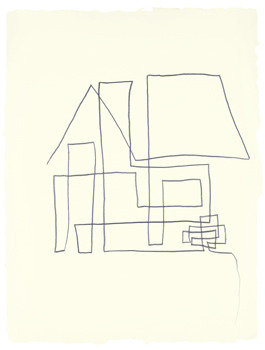The architectural ellipsis
dal 26/2/2013 al 15/6/2013
Segnalato da
Centro Cultural Universitario Tlatelolco
Esteban Azuela
Tania Candiani
Jordi Colomer
Democracia
Jimmie Durham
Larissa Fassler
Luca Frei
Leon Ferrari
Enrique Jezik
Jose Jimenez Ortiz
Mark Manders
Matt Mullican
Erik Olofsen
Clarisa Tossin
Anri Sala
Ruth Estevez
Javier Toscano
26/2/2013
The architectural ellipsis
Centro Cultural Universitario Tlatelolco, Mexico City
The project by Ruth Estevez and Javier Toscano explores the possibility of thinking through the consequences of an architectural reason that wants to go beyond both the ordering subjectivity of its creators, producers and critics, and the entire sphere of discourse that constitutes it.

The constitution of the disciplines of knowledge and of action has grown up around the precise delimitation of their analytical categories, the identification of the problems they address, the determination of their goals and the concrete means of achieving these. In this regard, architecture does not escape any of the usual rules of discursive construction. Nevertheless, the real world is not parcelled up into ordered disciplines to the same degree as the epistemological imagination would have us believe.
This project explores the possibility of thinking through the consequences of an architectural reason that wants to go beyond both the ordering subjectivity of its creators, producers and critics, and the entire sphere of discourse that constitutes it. It is evident that this territory has no official existence, nor is it generated merely on the basis of negating the order architecture entails. A cue: given that we are not working in the field of a particular discipline, and not subject to the same logic, it may be evoked through the use of ellipses, analogies and chiasms, references and partial allusions that form an inter-disciplinary field in which other kinds of operations of analysis and experimentation are possible.
Following this idea, it may be thought that an ellipsis of this architectural logic might make visible phenomena from other perspectives that are blind spots for architecture itself. Certain forms of art—performance, conceptual and post-conceptual practices, archive interventions—may constitute creative forms of understanding this meta-architectural order, in order to explore architecture beyond function, beyond the generation of spaces, beyond the functions of the field. From this moment on, it is possible to rethink any construction as a symbol and model of organization, its territorial demands as political demands, and its understanding of notions of citizenship and the (dis)ordered activities of individuals.
At the same time, the exploration of the alternate, ex-centric use of architectural tools engaged in by these artistic practices may provide a platform to investigate other facets of what may broadly be called the foundation of experience—in this case through denatured forms of representation—of what sometimes comes to make up a major part of our everyday urban practice. Thus, the détournement of the arsenal of architectural tools serves at the same time to reveal aspects of an architectural knowledge that are not necessarily evident to the practice itself, as well as to examine, from the perspective of other cognitive tools, the possibilities for meaning and impact of a habitability that can only be grasped on a multiplicity of levels.
Participating artists: Esteban Azuela, Tania Candiani, Jordi Colomer, Democracia, Jimmie Durham, Larissa Fassler, Luca Frei, León Ferrari, Enrique Ježik, José Jiménez Ortiz, Mark Manders, Matt Mullican, Erik Olofsen, Clarisa Tossin and Anri Sala.
A book accompanies the exhibition. It presents a group of theoretical texts and other experimental pieces which, stemming from different disciplines—anthropology, geography, urbanism or architecture itself—and from international case studies, provide different cognitive approaches and perspectives. It includes original artistic pieces and research by Santiago Borja, Decolonizing Architecture (Alessandro Petti, Sandi Hilal & Eyal Weizman), Sarah Demeuse, Ruth Estévez, Chloé Fricout & Javier Toscano and James Zomighani.
During the exhibition, the uiui (unit for intensive urban imagination) will produce, in collaboration with the Laboratorio para la Ciudad, a series of tours around Mexico City, guided by Cecilia Barraza (art historian) & Luisa Cortés (cultural promoter), María José Freytes & Ana Nava (artists), Luisa Lacorte (social scientist), Pablo Landa (anthropologist) and Gustavo Lipkau (architect). After every tour, the guides will give public talks at the Centro Cultural España. For the complete program please visit www.uiui-urbanunit.net or www.ccemx.org.
Image: Jimmie Durham, "A line of graphite beginning on the left side," 2009. Graphite on cotton paper, 81 x 61 cm. Image courtesy of the artist and kurimanzutto, Mexico City.
Centro Cultural Universitario Tlatelolco
Ricardo Flores Magón 1 - Tlatelolco, Cuauhtémoc, Mexico City



